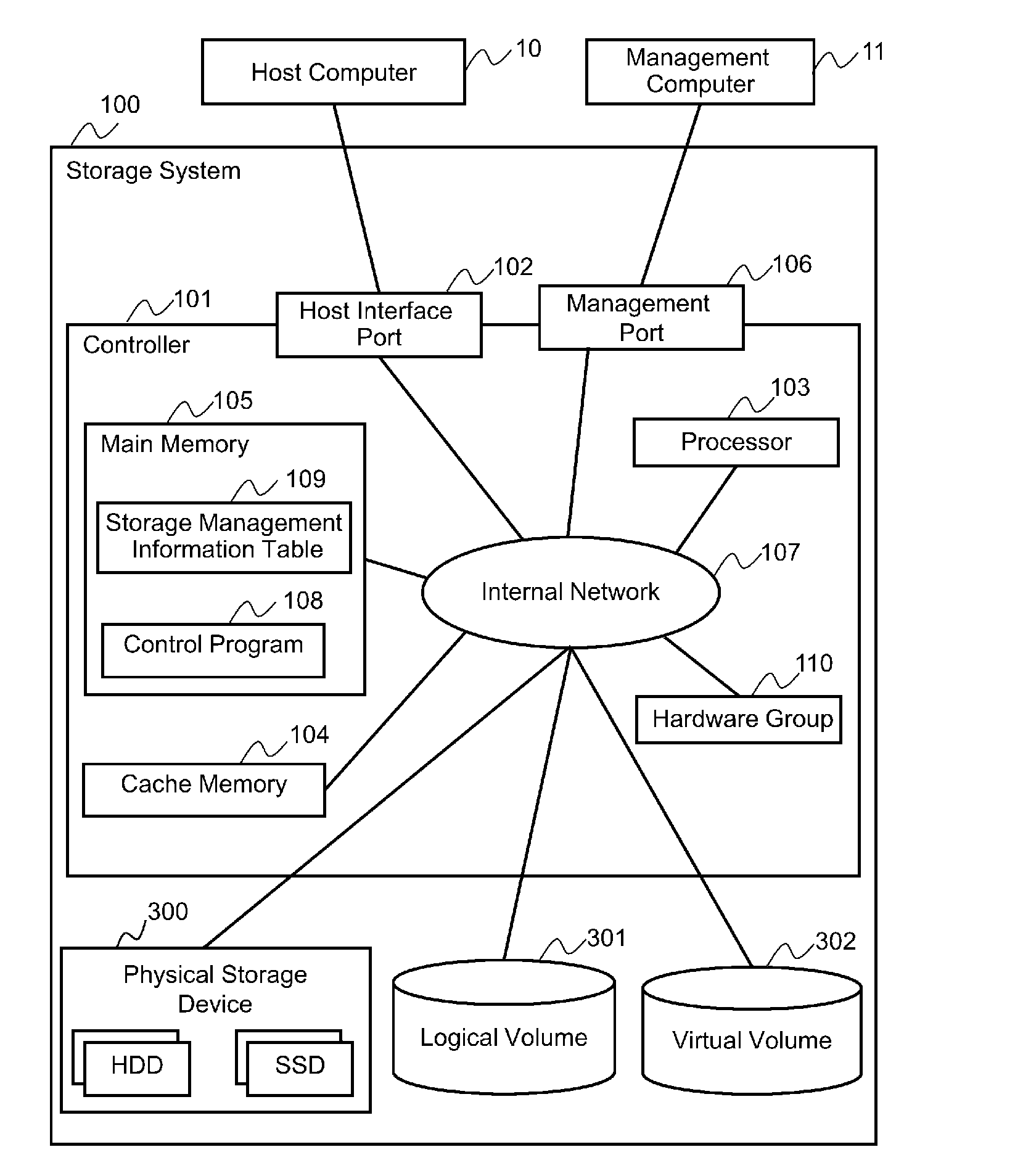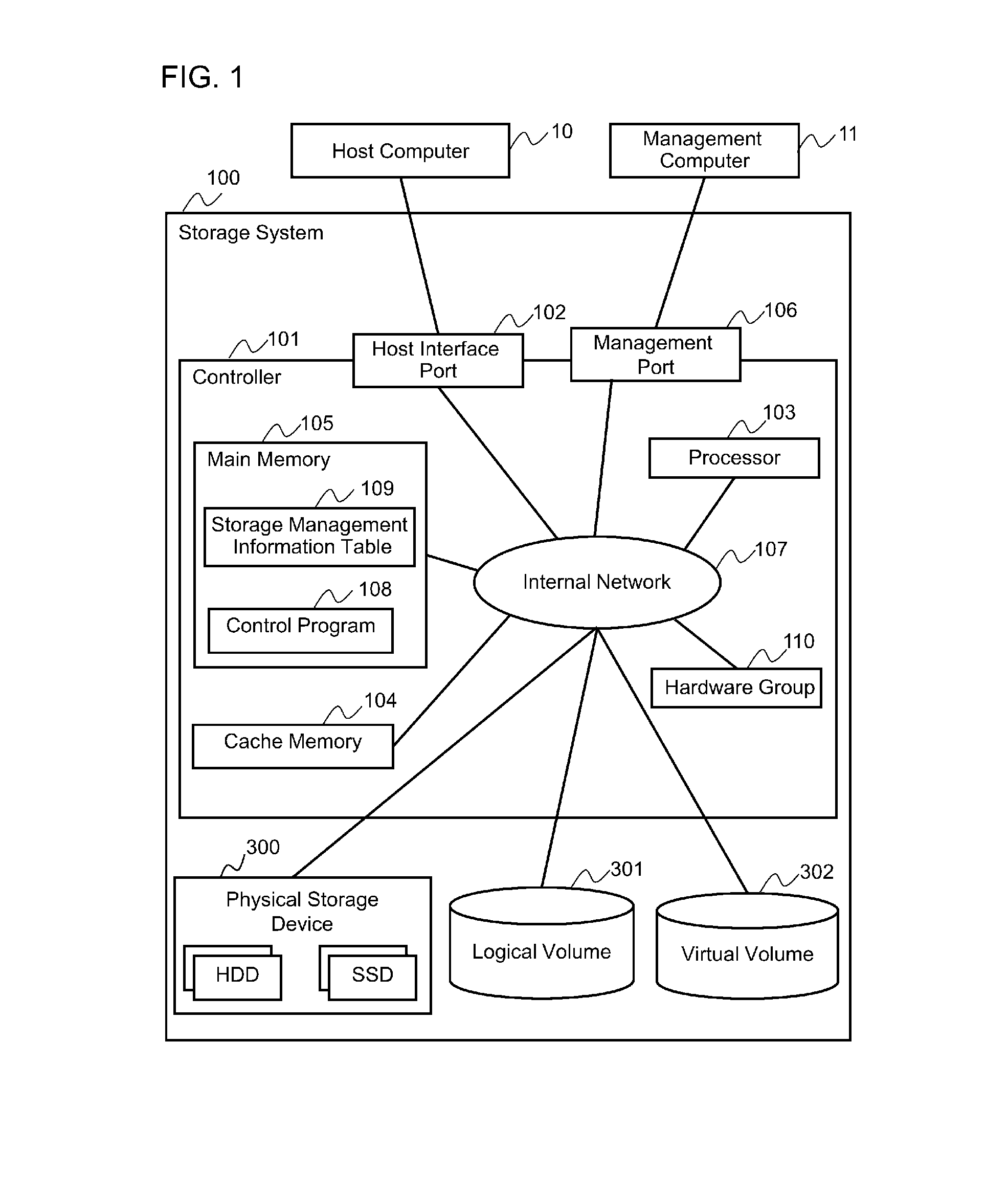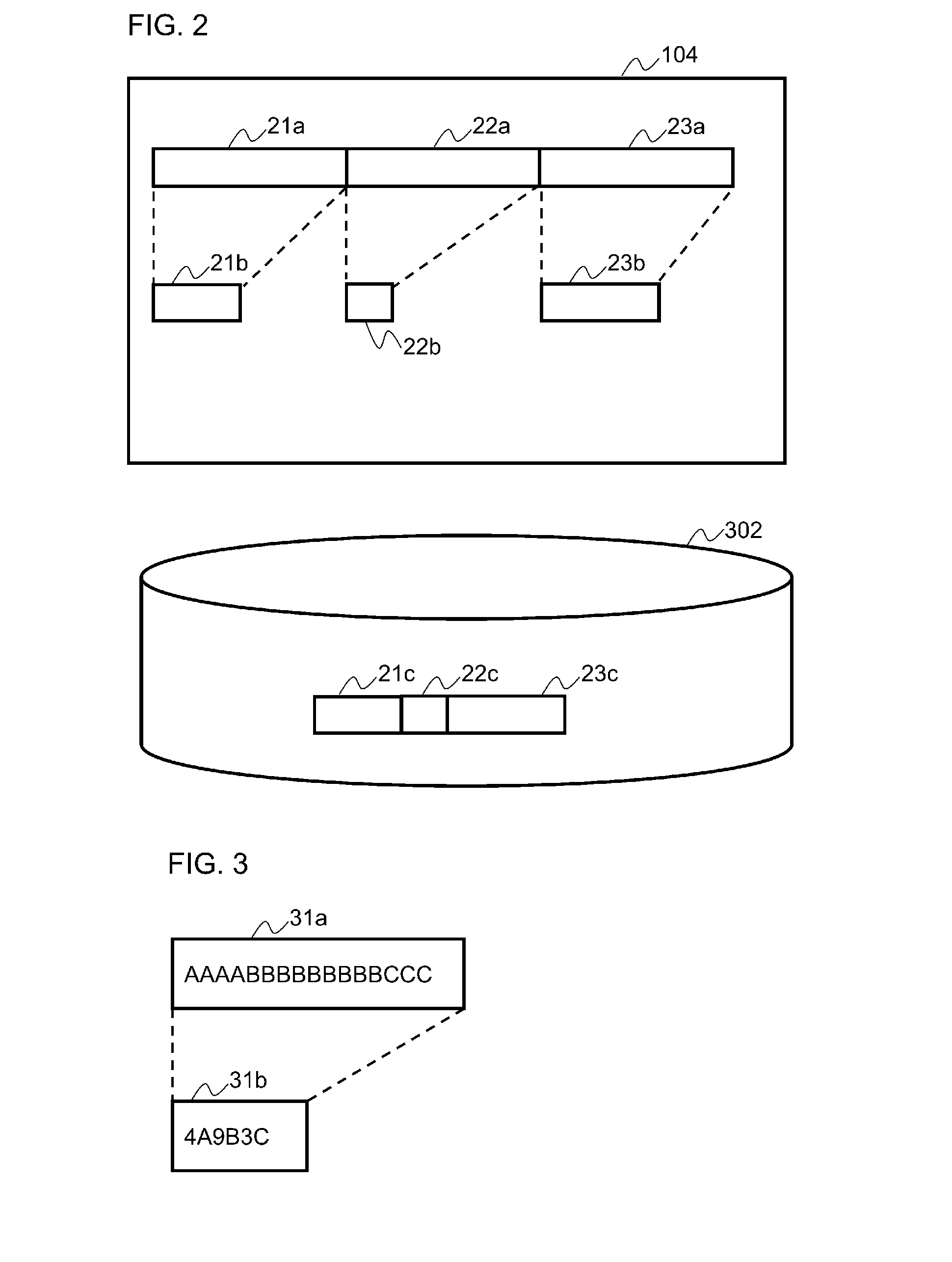Method for generating data in storage system having compression function
- Summary
- Abstract
- Description
- Claims
- Application Information
AI Technical Summary
Benefits of technology
Problems solved by technology
Method used
Image
Examples
embodiment 1
[0042]Now, the first embodiment of the present embodiment will be described with reference to FIGS. 1 through 12.
[0043]FIG. 1 is a block diagram illustrating a configuration example of a storage system according to embodiment 1.
[0044]A storage system 100 is composed of one or more controllers 101 for controlling the storage system 100, one or more host interface ports 102 for performing transmission and reception of data with a host computer 10, one or more processors 103, one or more cache memories 104, one or more main memories 105, one or more management ports 106 for connecting a management computer 11 for managing the storage system 100 and the storage system 100, a logical volume 301 or a virtual volume 302 for storing user data and the like, a hardware group 110 for performing parity calculation and other various computation processing, and an internal network 107 for mutually connecting components such as the processor 103 and the cache memory 104. Computation processing suc...
embodiment 2
[0073]Now, embodiment 2 of the present invention will be described with reference to FIGS. 13 through 22. In embodiment 2, the method for solving pattern B and pattern C that cannot be solved by embodiment 1 will be described. The details of the present embodiment will now be illustrated.
[0074]FIG. 13 is a view showing one example of the concept of compression processing according to embodiment 2. In embodiment 1, the run-length compression algorithm has been illustrated as a typical example of a common compression algorithm, and embodiment 2 will also be described taking the run-length compression algorithm as the example. In a common run-length compression algorithm, the compression target data is searched from the beginning to detect successive data, and the successive data is replaced with length information in order to compress data. In embodiment 2, to cope with pattern C, the non-compressed data 31a being the target of compression is divided at intermediate point 32t, wherein...
embodiment 3
[0090]Now, the third embodiment of the present invention will be described with reference to FIGS. 23 through 25. In the third embodiment, a method described in embodiment 2in which the decompression range boundary can be varied will be described.
[0091]FIG. 23 is a view showing a decompression boundary management table 122 according to embodiment 3. The decompression boundary management table 122 is stored in the main memory 105. The decompression boundary management table 122 is a table composed of the following items: an LBA 1211, a compression method 1215, and a decompression boundary 1221. The LBA 1211 and the compression method 1215 are the same as those in the compression address management table 121. The decompression boundary 1221 denotes an offset address of the decompression range boundary of the relevant compression unit. For example, if the decompression boundary 1221 is set to 128 KB, it means that the decompression range boundary of the relevant compression unit is at ...
PUM
 Login to View More
Login to View More Abstract
Description
Claims
Application Information
 Login to View More
Login to View More - R&D
- Intellectual Property
- Life Sciences
- Materials
- Tech Scout
- Unparalleled Data Quality
- Higher Quality Content
- 60% Fewer Hallucinations
Browse by: Latest US Patents, China's latest patents, Technical Efficacy Thesaurus, Application Domain, Technology Topic, Popular Technical Reports.
© 2025 PatSnap. All rights reserved.Legal|Privacy policy|Modern Slavery Act Transparency Statement|Sitemap|About US| Contact US: help@patsnap.com



